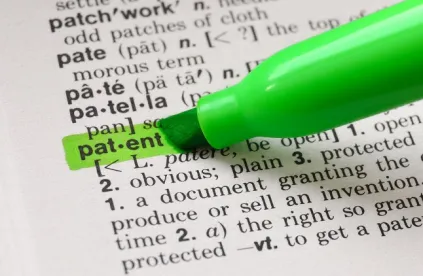The US Court of Appeals for the Federal Circuit affirmed a dismissal based on the defendant’s failure to state a claim motion, concluding that under principles of prosecution history estoppel, the patent owner could not establish infringement under the doctrine of equivalents based on prosecution history estoppel. Amgen Inc. v. Coherus Biosciences Inc., Case No. 18-1993 (Fed. Cir. July 29, 2019) (Stoll, J).
Amgen sued Coherus for infringement of a patent directed to a method of purifying recombinant proteins using hydrophobic interaction chromatography (HIC) after Coherus filed an abbreviated biologic license application indicating its intent to manufacture and market a biosimilar version of Amgen’s pegfilgrastim product Neulasta. Each claim of Amgen’s patent requires an elution buffer chosen from one of three buffer combinations. Because Coherus’ purification method used an elution buffer that was different from the three indicated buffer combinations in Amgen’s patent, Amgen alleged infringement under the doctrine of equivalents.
Coherus filed a motion to dismiss, arguing that Amgen was precluded from asserting infringement under the doctrine of equivalents because Amgen surrendered combinations of salts that were different from those three recited in the claims during prosecution of the application for the asserted patent. Specifically, Coherus argued that Amgen differentiated its claims from the Holtz prior art reference, which disclosed several salts for improving hydrophobic interactions in chromatography. Coherus further asserted that Amgen argued during prosecution that Holtz (1) did not recite any particular combination of salts, (2) did not recite the particular combinations of salts in the pending claims, and (3) did not disclose increasing dynamic capacity, which is the amount of protein that can be added to the column at once. During prosecution, Amgen also provided a declaration from an inventor specifying that the three specific combinations of salts in the asserted patent had the characteristic of allowing for substantial increases in dynamic capacity, and the declaration did not discuss any other salt combinations. The district court granted Coherus’s motion, finding that Amgen distinguished its claims from Holtz by pointing out that Holtz did not disclose “one of the particular recited combinations of salts,” and this resulted in prosecution history estoppel, which precluded infringement under the doctrine of equivalents. Amgen appealed.
The Federal Circuit affirmed, finding that “Amgen clearly and unmistakably surrendered salt combinations other than the particular combinations recited in the claims.” The Court further noted that when multiple bases are presented during prosecution by which to distinguish an application from prior art, each is a sufficient basis for prosecution history estoppel as long as the bases were not used in combination to distinguish from prior art. The Court also noted that it does not matter if an assertion made by the applicant during prosecution was actually required for a patent to issue; if the applicant made the assertion, that is a sufficient basis for estoppel.
Practice Note: Care must be taken in overcoming prior art during prosecution. Each basis asserted by the applicant in distinguishing from prior art creates an opportunity for a prosecution history estoppel.



 />i
/>i
